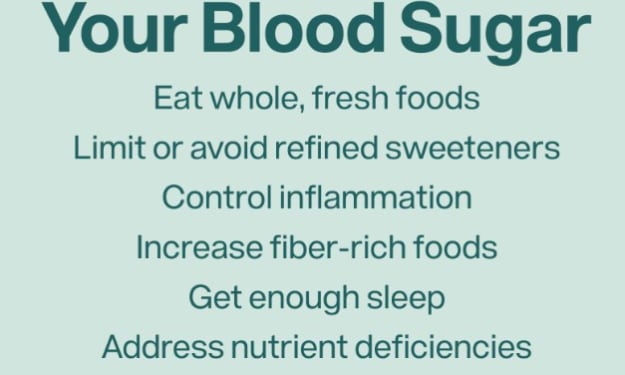What is the function of the prostate in the bladder?
What is the function of a prostate and can you live without it?

## The Prostate Gland: Understanding Its Functions and Life Without It
The prostate is a small but significant gland in the male body, often coming to attention due to various health issues that can arise with age. Understanding the prostate's functions and exploring the implications of living without it provides insight into this crucial part of male anatomy.
### What is the Prostate?
The prostate is a walnut-sized gland situated just below the bladder and in front of the rectum. It encircles the urethra, the tube that carries urine and semen out of the body. While small, the prostate plays a vital role in both the reproductive and urinary systems.
### Functions of the Prostate
1. **Production of Seminal Fluid**:
- The prostate produces a fluid that forms a significant part of semen. This prostatic fluid is slightly alkaline, which helps to neutralize the acidic environment of the female reproductive tract, enhancing sperm viability and mobility.
- During ejaculation, muscles in the prostate contract to help propel the semen, which contains sperm from the testes, into the urethra and out through the penis.
2. **Regulation of Urine Flow**:
- The prostate's location around the urethra means it helps in controlling the flow of urine. The muscle fibers within the prostate are involved in the process of urination, aiding in the opening and closing of the urethra.
3. **Protection and Nourishment of Sperm**:
- The prostate's secretions include enzymes, zinc, and citric acid that help protect and nourish sperm, making the seminal fluid more effective in promoting successful fertilization.
### Can You Live Without a Prostate?
While the prostate serves important functions, it is not essential for life. There are several conditions, such as prostate cancer or severe benign prostatic hyperplasia (BPH), where removal of the prostate, known as a prostatectomy, might be necessary. Living without a prostate does come with specific considerations and potential impacts on quality of life.
#### Life After Prostate Removal
1. **Reproductive Changes**:
- After a prostatectomy, the production of seminal fluid ceases. While men will no longer ejaculate semen, the testes continue to produce sperm. However, without the seminal fluid, these sperm cannot be expelled during orgasm.
- This leads to a condition known as dry orgasm. While sexual function and the ability to achieve orgasm are often preserved, the nature of the orgasm changes significantly.
- Men who wish to father children post-prostatectomy might need to consider options like sperm retrieval techniques or sperm banking prior to surgery.
2. **Urinary Control**:
- The removal of the prostate can affect urinary control. The risk of urinary incontinence is a concern, though many men regain full control over time with the help of pelvic floor exercises and rehabilitation.
- Advanced surgical techniques have improved outcomes, reducing the incidence of severe urinary incontinence after prostate removal.
3. **Sexual Function**:
- Erectile dysfunction (ED) can be a side effect of prostate surgery, especially if the nerves surrounding the prostate are damaged during the procedure. Nerve-sparing techniques aim to preserve erectile function, but the degree of recovery varies among individuals.
- Medications, penile implants, or other therapies may be necessary to assist in achieving erections post-surgery.
### Health Management Post-Prostatectomy
1. **Regular Follow-ups**:
- Post-surgery, regular check-ups are crucial to monitor recovery and manage any potential complications, including urinary or sexual function issues.
2. **Lifestyle Adjustments**:
- Maintaining a healthy diet, staying active, and engaging in pelvic floor exercises can aid in recovery and help manage the side effects of prostate removal.
3. **Emotional Support**:
- The psychological impact of prostate removal, including changes in sexual and urinary function, can be significant. Support groups, counseling, and open communication with partners and healthcare providers are vital for emotional well-being.
### Conclusion
The prostate plays key roles in male reproductive and urinary systems, but life without it is entirely possible. Advances in medical procedures and supportive therapies mean that men can lead full, active lives after prostate removal, though they may need to adapt to changes in their urinary and sexual health.
Understanding the functions of the prostate and the implications of its removal empowers men to make informed decisions about their health. Whether facing prostate health issues or contemplating surgery, knowledge is a powerful tool in navigating these challenges.
-## Exploring the Prostate: Functions and Life Without It
The prostate gland, often overlooked until health issues arise, plays a crucial role in male anatomy. Understanding its functions and the implications of living without it provides valuable insights into its significance and the potential impacts of prostate-related conditions.
### Understanding the Prostate's Functions
The prostate is a small, walnut-sized gland located just below the bladder and in front of the rectum. It surrounds the urethra, the tube that carries urine and semen out of the body, and serves several important functions:
1. **Production of Seminal Fluid**:
- The primary function of the prostate is to produce a fluid that makes up a significant portion of semen. This prostatic fluid is rich in enzymes, zinc, and citric acid, which help nourish and protect sperm, enhancing their motility and viability.
2. **Aiding in Ejaculation**:
- During ejaculation, the muscles of the prostate gland contract to propel semen into the urethra. This process facilitates the transport of sperm through the reproductive tract during sexual intercourse.
3. **Regulation of Urinary Flow**:
- The location of the prostate gland around the urethra allows it to play a role in controlling the flow of urine. The muscles of the prostate help to open and close the urethra, aiding in the process of urination.
### Can You Live Without a Prostate?
While the prostate gland is vital for reproductive function and urinary control, it is not essential for life. Several conditions may necessitate the removal of the prostate, known as a prostatectomy. These conditions include:
- **Prostate Cancer**: The most common reason for prostate removal is prostate cancer, which affects a significant number of men, especially as they age.
- **Benign Prostatic Hyperplasia (BPH)**: Severe cases of BPH, where the enlarged prostate gland obstructs urinary flow and causes significant symptoms, may also require surgical intervention.
### Life After Prostate Removal
#### Reproductive and Sexual Function:
- **Impact on Semen Production**: After a prostatectomy, the production of prostatic fluid ceases. As a result, men will no longer ejaculate semen during orgasm, a condition known as dry orgasm.
- **Fertility Considerations**: While the ability to achieve orgasm and experience sexual pleasure is typically preserved, men who wish to father children post-surgery may need to explore options such as sperm retrieval techniques or sperm banking prior to prostate removal.
#### Urinary Function:
- **Urinary Continence**: One of the primary concerns after prostate surgery is urinary continence. Some men may experience temporary or long-term urinary incontinence due to surgical effects on the sphincter and bladder control mechanisms.
- **Recovery and Rehabilitation**: Pelvic floor exercises and bladder training can help improve urinary control over time, although the degree of recovery varies among individuals.
#### Emotional and Psychological Considerations:
- **Adjustment Period**: Adjusting to life without a prostate involves adapting to changes in urinary and sexual function, which can have emotional implications. Support groups, counseling, and open communication with healthcare providers are crucial for emotional well-being during this transition.
### Conclusion
The prostate gland is integral to male reproductive and urinary health, but its removal is feasible in cases of cancer or severe benign enlargement. Advances in medical techniques and supportive therapies enable many men to lead fulfilling lives after prostatectomy, though they may need to manage changes in urinary and sexual function.Fluxactive Complete Reviews
Understanding the functions of the prostate and the potential impacts of its removal empowers individuals to make informed decisions about their health. Whether facing prostate health concerns or preparing for surgery, knowledge and awareness are essential tools in navigating these challenges.
About the Creator
peter
Content about cars, motorbikes, technology, news
Enjoyed the story? Support the Creator.
Subscribe for free to receive all their stories in your feed. You could also pledge your support or give them a one-off tip, letting them know you appreciate their work.






Comments
There are no comments for this story
Be the first to respond and start the conversation.